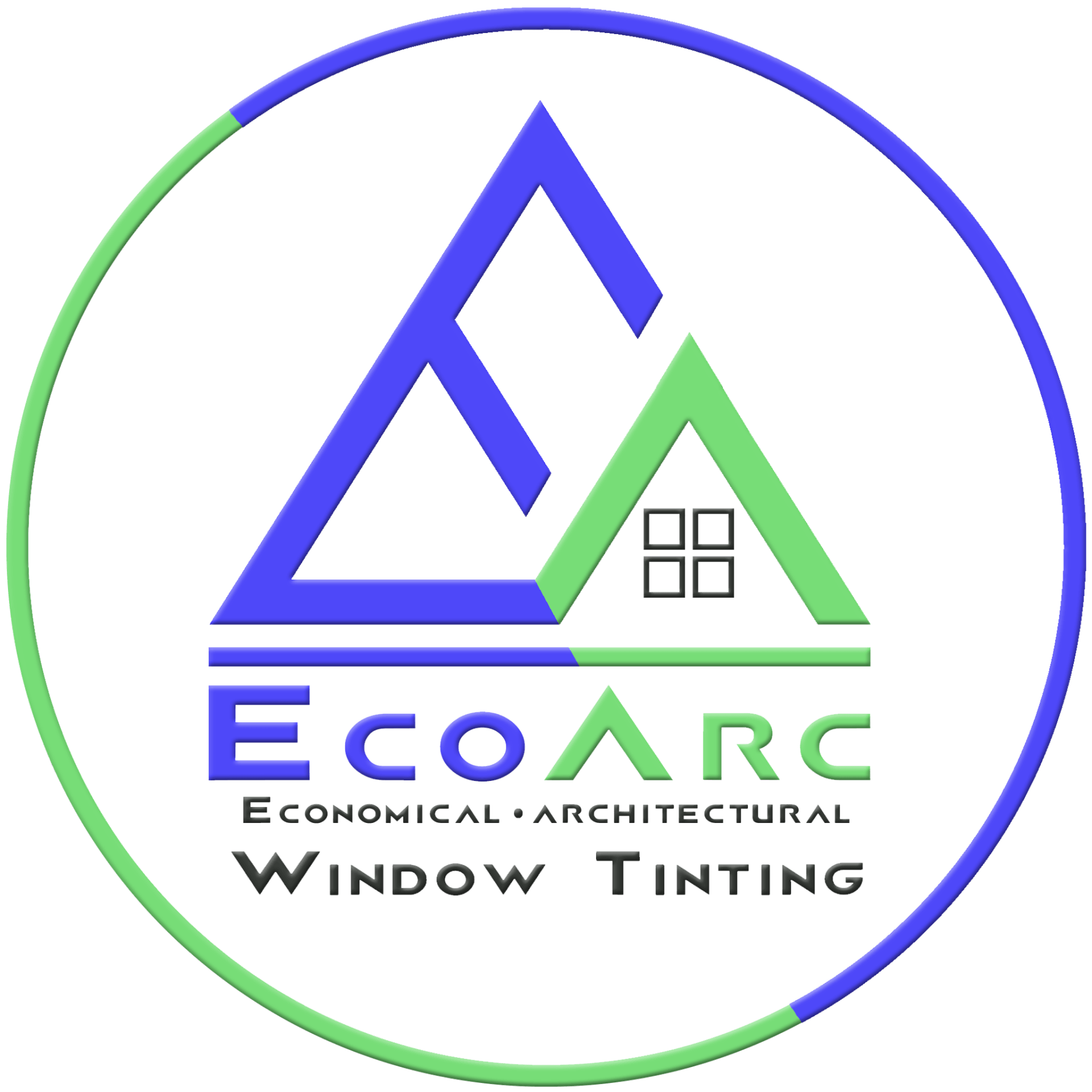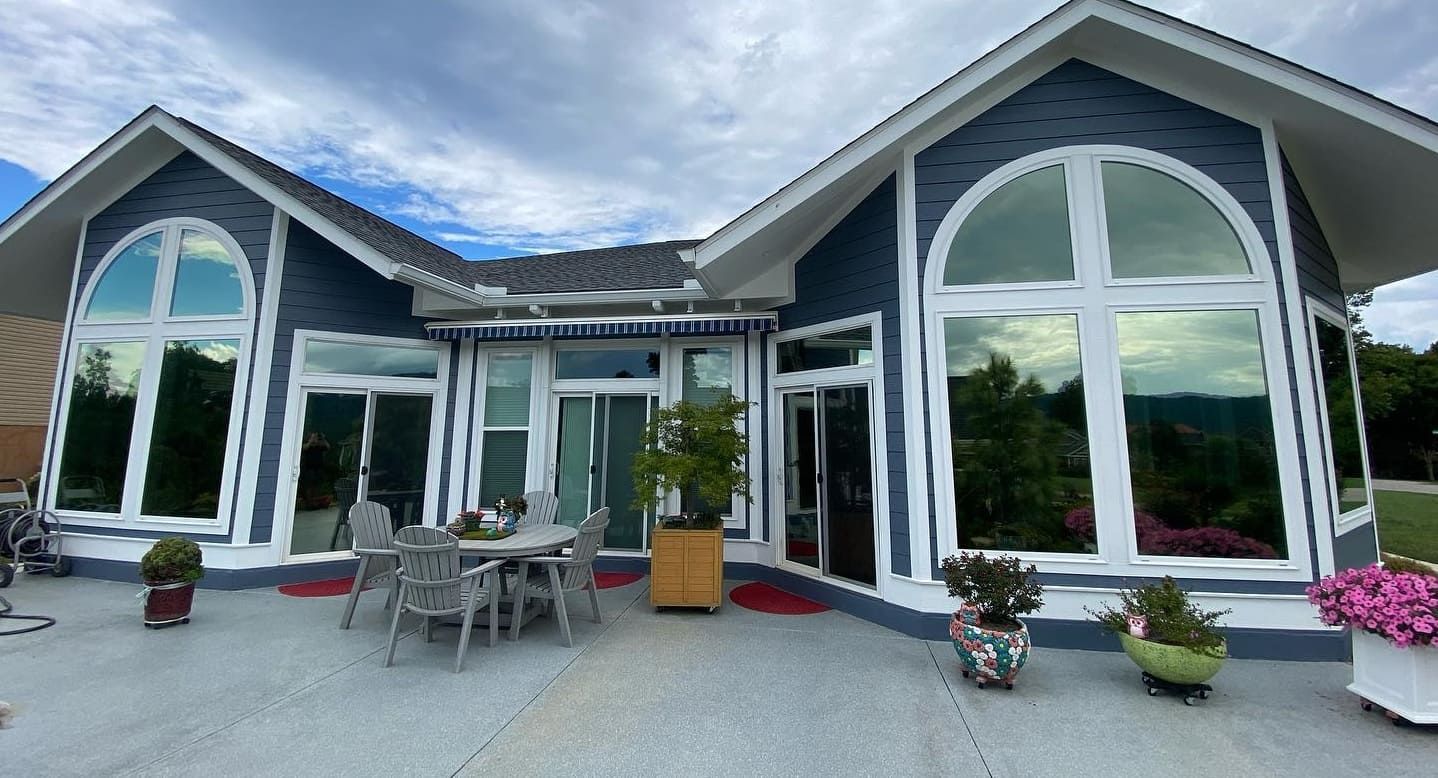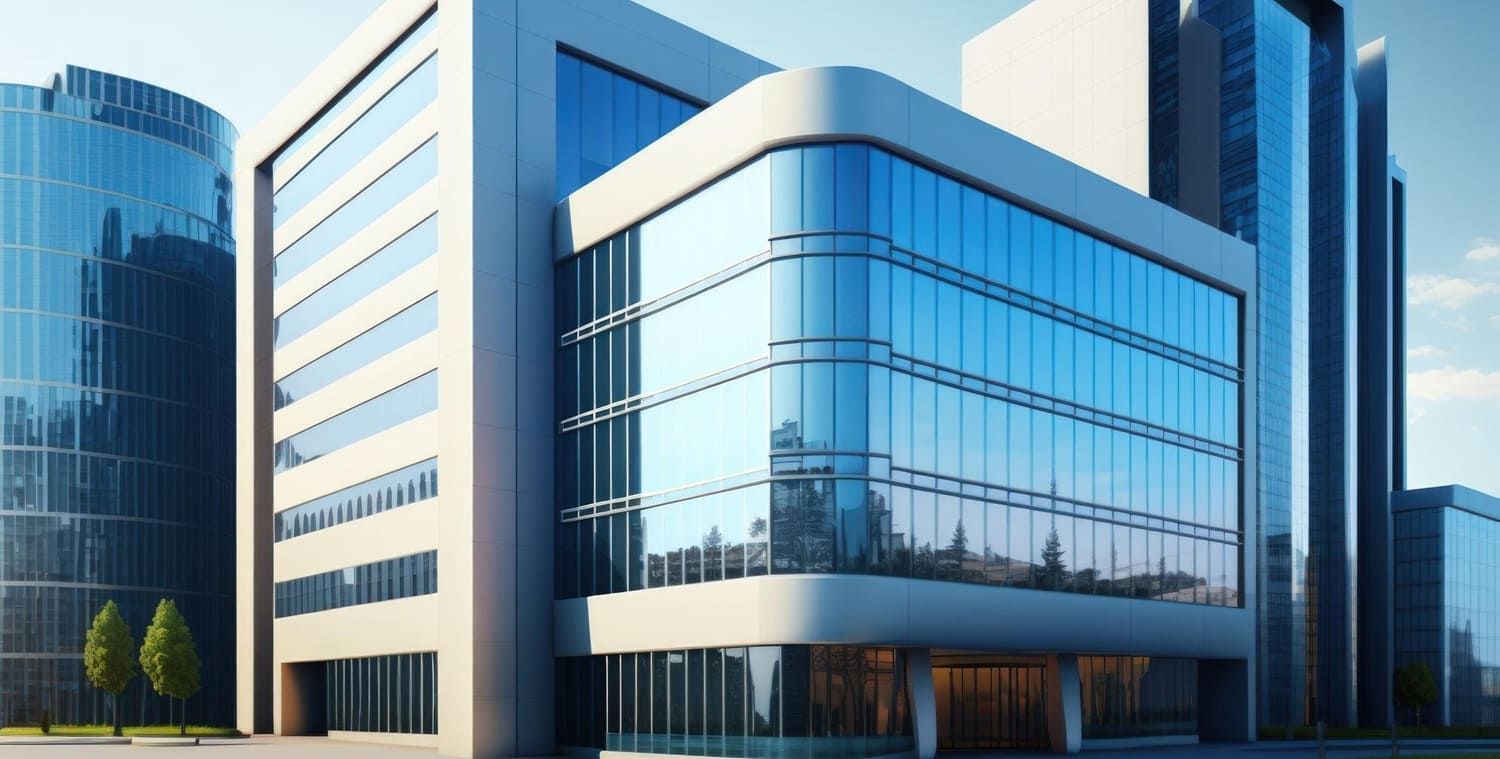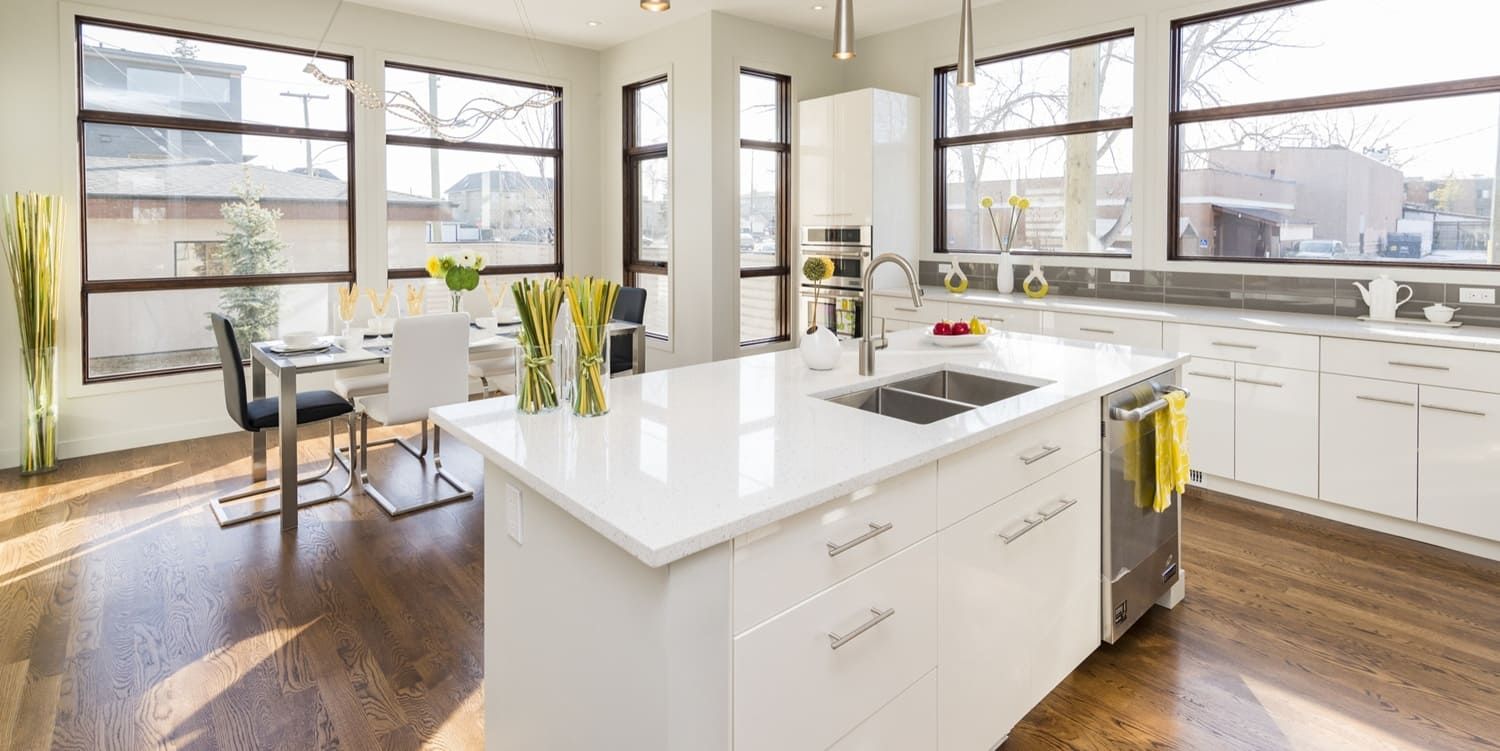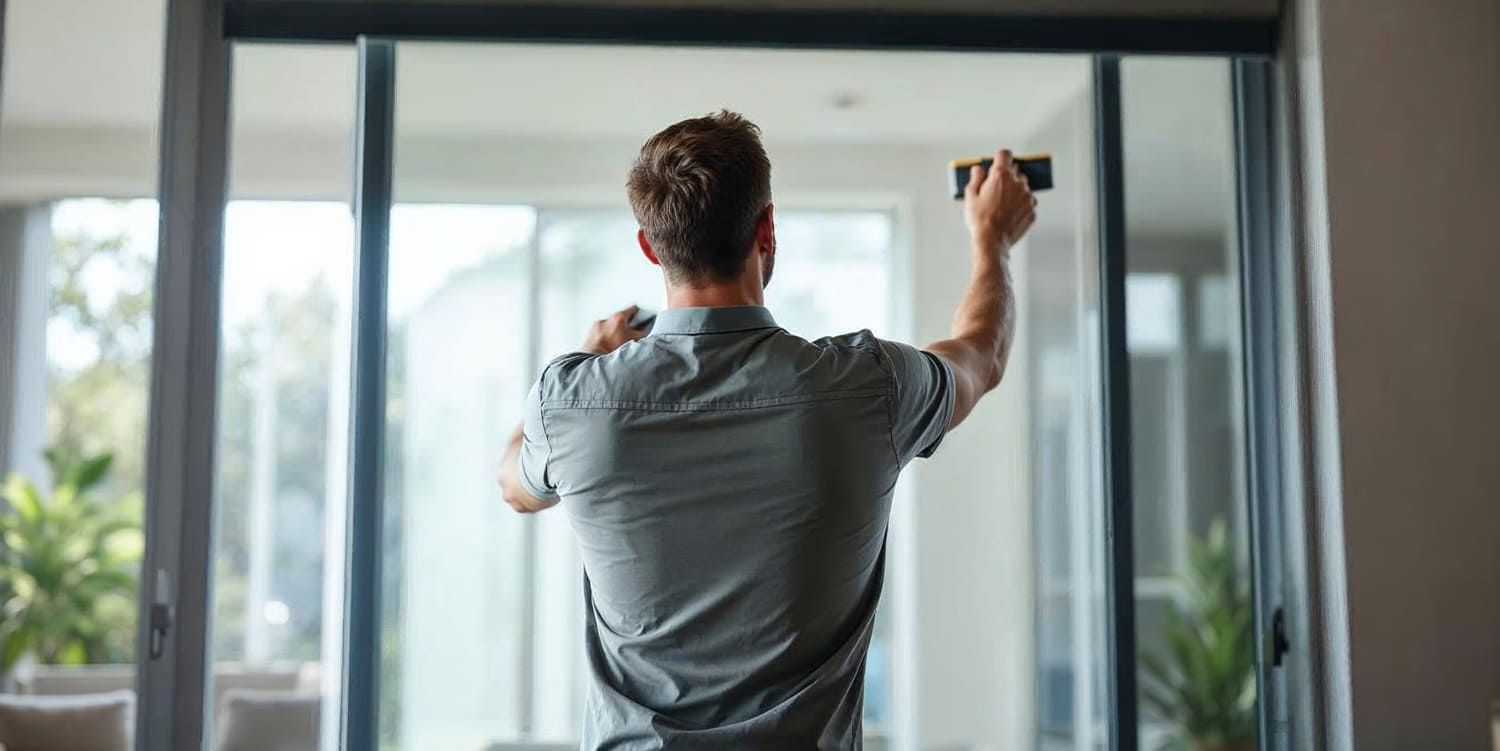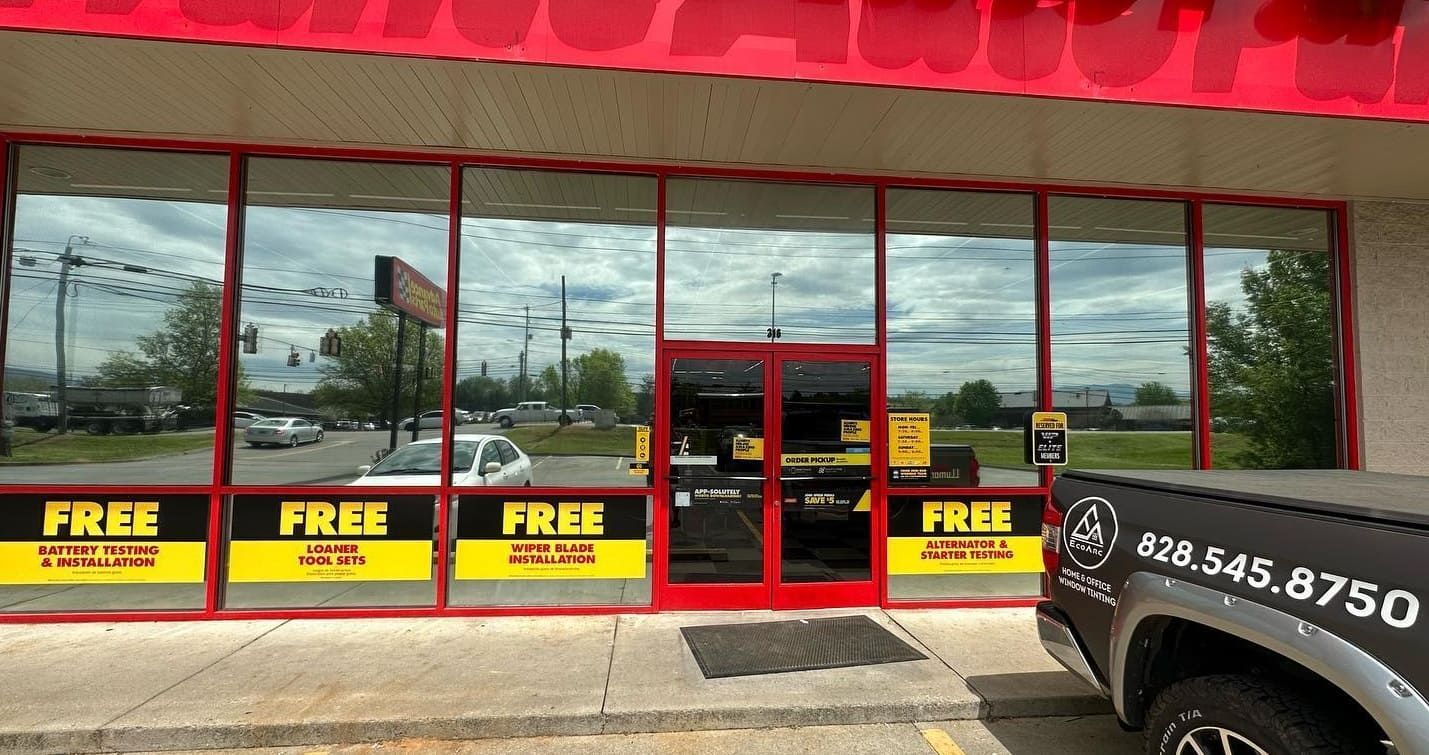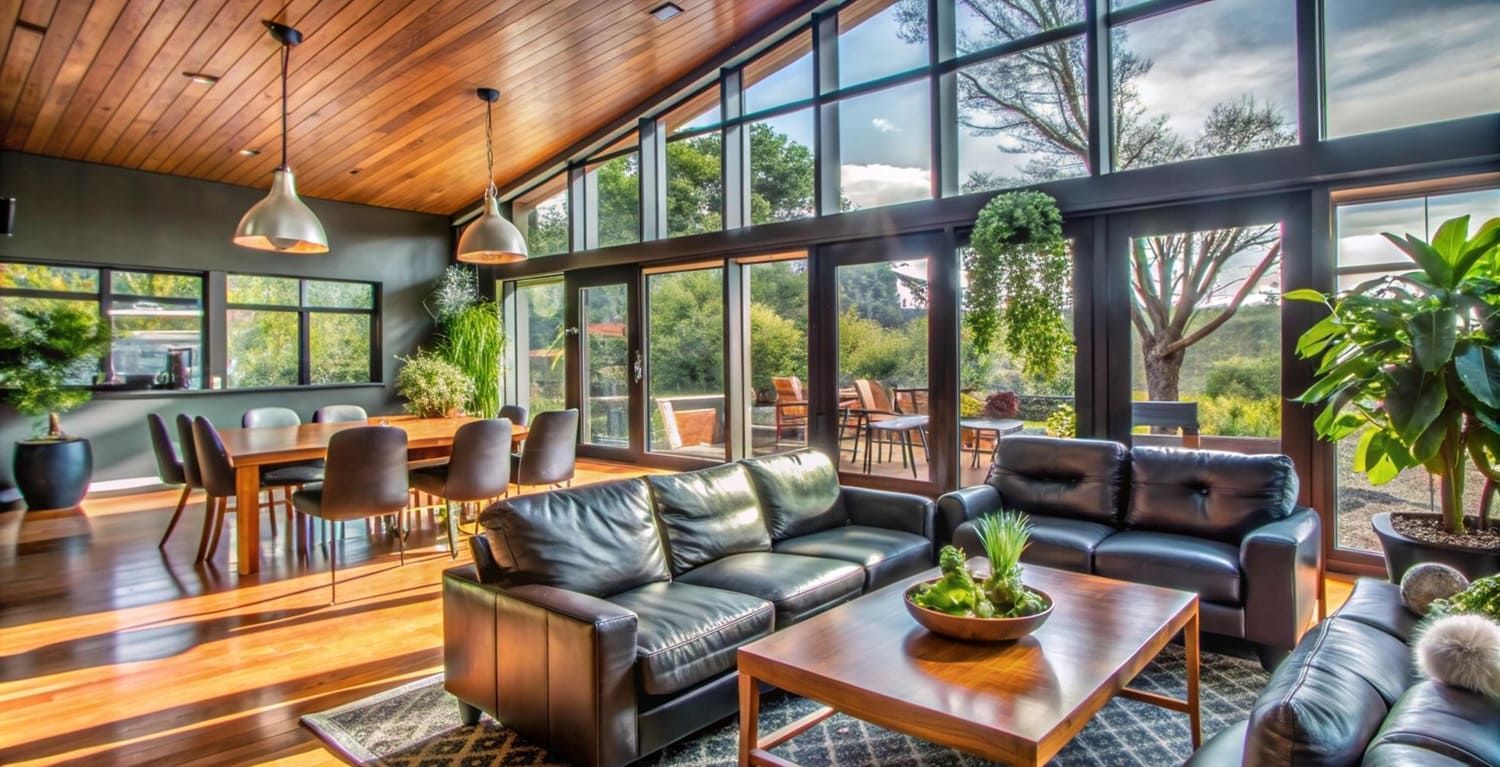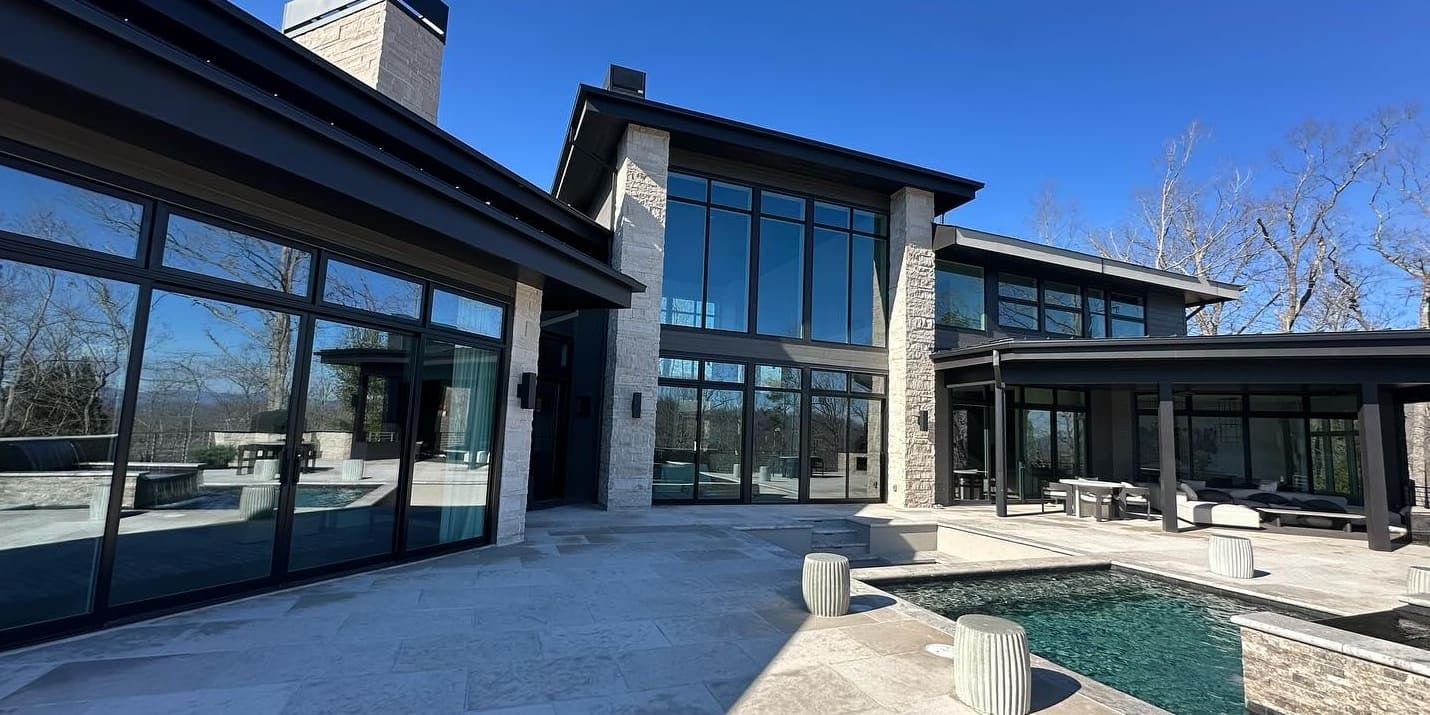Best Heat-Reducing Window Films for Hot Southern Climates in 2026
Southern summers place heavy demand on cooling systems. Choosing the right heat‑reducing window film is one of the most cost‑effective ways to lower indoor temperatures, cut HVAC runtime, and protect furniture and finishes. This guide breaks down what these films do, how they work, which technologies perform best in hot southern climates in 2026, and which performance numbers matter most. You’ll get clear TSER, IR rejection, VLT, and UV targets tailored to conditions in Asheville, Knoxville, and Greenville, side‑by‑side comparisons of ceramic, spectrally selective, dual‑reflective, and low‑E films, and real‑world benefits like energy savings and glare control. Finally, we walk through a simple decision framework and explain local installation options and professional services from EcoArc Home & Office Window Tinting for readers who want turnkey solutions.
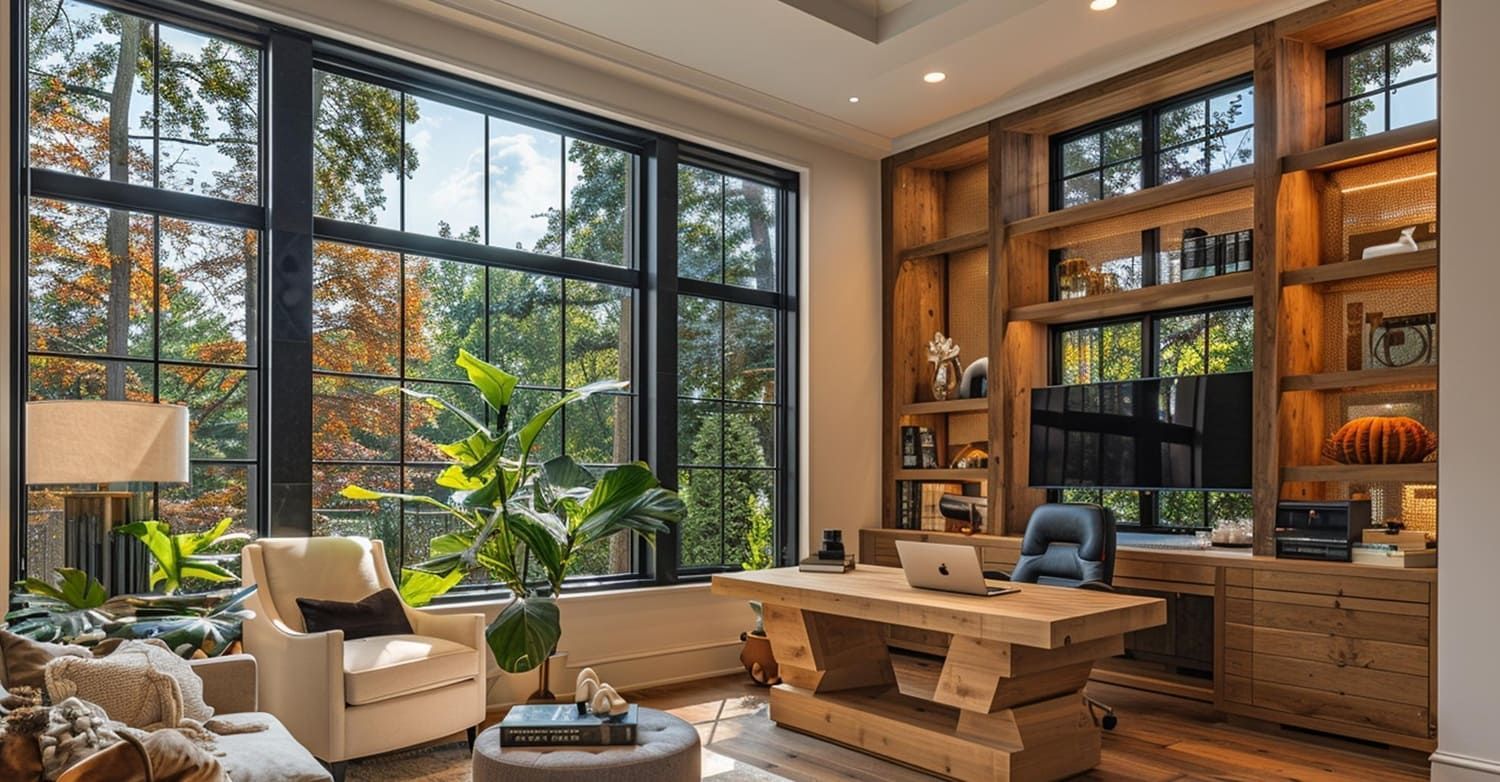
What Are Heat-Reducing Window Films and How Do They Work?
Heat‑reducing window films are thin polyester laminates applied to glass that selectively block parts of the solar spectrum — mainly infrared (IR) and ultraviolet (UV) — while managing visible light (VLT). Built as multi‑layer assemblies, they use nano‑ceramic coatings, metalized layers, and spectrally selective dyes to absorb or reflect heat before it enters the building. The practical outcome is lower interior surface temperatures, reduced air‑conditioning run time, and preserved daylight when you choose spectrally selective options. Knowing how these films work makes it easier to prioritize metrics such as TSER and IR rejection when specifying products for hot southern exposures and when comparing film types and installers.
What Benefits Do Heat-Reducing Window Films Provide for Southern Homes and Businesses?
Applied window films deliver measurable benefits in hot southern climates: lower cooling energy use, more even indoor temperatures, and longer life for sun‑exposed furnishings. Quality films can reduce interior surface temperatures by several degrees, cut peak cooling demand, and lead to utility bill savings and reduced strain on HVAC equipment. They also block very high percentages of UV light, slowing fading of upholstery, flooring, and artwork. Those combined benefits boost occupant comfort and protect building assets — a strong reason to evaluate film technologies that meet 2026 performance expectations.
How Do Heat-Reducing Films Block Solar Heat and UV Rays?
Window films work by targeting wavelength bands: UV (<400 nm), visible light (400–700 nm), and infrared (>700 nm). Nano‑ceramic and spectrally selective films are tuned to cut near‑ and short‑wave IR while keeping visible light levels high. Metalized films reflect broadly across the spectrum but can darken appearance and occasionally interfere with signals. Durable adhesive layers and tough topcoats keep films stable under sustained sun exposure. The trade‑offs between appearance (VLT) and performance (TSER/IR rejection) determine the best choice for each application — and why performance metrics, not looks alone, should guide selection in hot southern climates.
Spectral Selective Thin Films for Energy Efficient Windows
A review of spectrally selective and metal‑based thin films that outlines engineering approaches for maximizing spectral selectivity and improving glazing performance.
Spectral selective and photothermal nano structured thin films for energy efficient windows, D Shi, 2017
Which Types of Heat-Reducing Window Films Are Best for Hot Southern Climates?
Picking the right film is about balancing heat rejection, daylight, and appearance. For hot southern climates, ceramic and spectrally selective films are generally the top picks — they deliver strong IR rejection while keeping interiors bright. Dual‑reflective and low‑E films have their place when privacy, exterior reflectance, or year‑round thermal balance are priorities. The table below summarizes typical attributes and common use cases so you can match film technology to window orientation, occupant needs, and design goals.
Introductory comparison of film categories for hot southern climates:
| Film Type | Key Attributes (TSER / IR Rejection / VLT / Appearance) | Best Use Case |
|---|---|---|
| Nano-Ceramic | High TSER (often 50–70%), strong IR rejection, medium‑high VLT, nearly neutral appearance | South‑ and west‑facing living rooms, offices where daylight is important |
| Spectrally Selective | Very high IR rejection with VLT retention (TSER 45–65%), subtle tint | Spaces that need daylight plus heat control (storefronts, classrooms) |
| Dual-Reflective | Good heat rejection, lower interior reflectance, moderate VLT | Ground‑floor privacy, storefronts, conference rooms |
| Low-E Film | Balanced year‑round performance, moderate TSER | Mixed‑climate buildings or sites needing winter heat retention and summer shading |
What Are the Advantages of Ceramic Window Film for Heat Rejection?
Nano‑ceramic films use nonmetallic ceramic nanoparticles to block infrared energy while preserving a neutral, low‑reflective look and leaving wireless signals unchanged. Ceramic formulations rank among the best nonmetal films for IR rejection and hold optical clarity over time. Robust protective topcoats improve scratch resistance and long‑term durability, keeping the film looking clear and performing well in high‑heat exposures. That mix of performance and appearance makes ceramic films a common recommendation for south‑ and west‑facing glazing where both heat control and daylight matter.
How Do Solar Control and Spectrally Selective Films Compare in Hot Climates?
Spectrally selective films are engineered to reject substantial near‑IR while allowing visible light through — delivering a strong TSER‑to‑VLT ratio that keeps interiors bright. Solar control films reduce a broader portion of the solar spectrum and can darken interiors more noticeably; they can reach high TSER but at the cost of reduced daylight. In short: spectrally selective films prioritize daylight and occupant comfort with less visual change, while solar control films maximize heat reduction when appearance or signal concerns are secondary. The right choice depends on room function, façade orientation, and aesthetic priorities.
Spectrally Selective Window Film for Energy Efficiency
Applied spectrally selective window film is a proven retrofit to improve energy performance by reducing solar heat gain while preserving useful daylight.
Comparing the Energy Conservation Capabilities of Spectrally Selective and Conventional Applied Window Film, 2005
What Are Dual-Reflective and Low-E Films and When Should They Be Used?
Dual‑reflective films pair a reflective exterior surface with a less reflective interior face to reduce exterior glare and provide daytime privacy while still cutting solar gain — a good fit for street‑level offices and storefronts. Low‑E films change a window’s emissivity to improve year‑round thermal balance: they limit long‑wave heat loss in winter and reduce solar gain in summer, useful for buildings with mixed seasonal needs. Use dual‑reflective where privacy and exterior appearance matter; choose low‑E when you need balanced performance across seasons. Understanding these roles helps you specify the right film for each façade.
How Do Key Performance Metrics Affect Window Film Effectiveness in 2026?
Metrics like Total Solar Energy Rejected (TSER), IR rejection, Visible Light Transmission (VLT), and UV blocking quantify how a film influences comfort, glare, and energy use. Choosing films with clear target values is essential for hot southern climates. TSER is the broadest single indicator — it combines reflection, absorption, and emissivity into a percentage representing how much solar energy is kept out. IR rejection focuses on radiant heat that creates hot spots. Having clear metric targets simplifies vendor comparisons and supports performance‑driven decisions.
Introductory clarification of metrics and recommended target values for hot southern climates:
| Metric | What It Measures | How It Affects Comfort/Energy | Target Values for Hot Southern Climates |
|---|---|---|---|
| TSER | Percent of solar energy prevented from entering | Correlates to lower cooling load and shorter HVAC runtime | >50% desirable for south/west glazing |
| IR Rejection | Percent of infrared wavelengths blocked | Cuts radiant heat and hot spots | >60% for top‑performing films |
| VLT | Percent of visible light transmitted | Determines daylight and interior illumination | 40–70% to balance daylight with heat control |
| UV Blocking | Percent of UV blocked | Prevents fading and reduces occupant exposure | ≥99% for long‑term interior protection |
What Is Total Solar Energy Rejected and Why Is It Important?
Total Solar Energy Rejected (TSER) is the share of incident solar energy a window system (glass plus film) prevents from entering, expressed as a percentage. It combines reflected, absorbed, and re‑emitted energy components. TSER correlates directly with cooling load reduction because it measures energy that never needs to be removed by the HVAC system. Higher TSER usually shortens payback through energy savings — for example, raising TSER by 10–15 points on large south‑facing façades can materially lower peak cooling demand and improve comfort near windows. TSER lets owners compare films on a common performance basis.
How Do Infrared Rejection, Visible Light Transmission, and UV Blocking Impact Comfort and Energy Savings?
Infrared rejection targets the longer wavelengths that carry most solar heat; higher IR rejection reduces radiant heat and hot surfaces, improving comfort near windows. Visible Light Transmission (VLT) governs daylighting: higher VLT preserves natural light and can cut electric lighting, though it may slightly lower TSER if the film isn’t spectrally selective. UV blocking protects finishes and skin exposure — quality films commonly block ≥99% of UV, slowing fading and limiting damage. Together, these metrics form a film’s performance profile: high TSER and IR rejection with moderate‑to‑high VLT and near‑total UV blocking are ideal for hot southern sites that want energy efficiency without losing daylight.
Spectrally Selective Window Films for Passive Solar Gain Reduction
After‑market applied window films provide effective passive solar gain control. Several manufacturers offer films tailored to end‑user needs, delivering benefits such as glare reduction and UV protection alongside energy savings.
Spectrally selective window films, 2007
Why Are Heat-Reducing Window Films Essential for Homes and Businesses in Hot Southern Climates?
In places like Asheville, Knoxville, and Greenville, long cooling seasons and strong solar loads make window films a practical retrofit. By cutting incoming solar energy, films reduce peak AC loads, shorten HVAC run time, and can lower summer utility bills. They also protect interiors from UV fading, extending the life of furnishings and finishes. For both residential retrofits and commercial upgrades, these outcomes combine to deliver a solid return on investment where solar exposure drives cooling costs.
Introductory table linking benefits to mechanisms and typical outcomes:
| Benefit | Mechanism | Typical Outcome |
|---|---|---|
| Energy reduction | TSER and IR rejection lowering solar gain | 5–20% cooling energy savings depending on glass area |
| Improved comfort | Reduced surface temperatures and hot spots | 2–8°F lower interior surface temps near windows |
| UV protection | UV‑blocking layers absorb/reflect UV | Up to 99% reduction in UV exposure, less fading |
| Glare control | VLT and surface reflectance reduce glare | Better screen visibility and occupant comfort |
How Do Window Films Reduce Energy Costs and Improve Indoor Comfort in Asheville, Knoxville, and Greenville?
Regional summers bring high sun angles and long exposures on south and west façades, increasing cooling loads and creating hot spots. Installing films that meet the TSER targets above typically lowers peak cooling demand and can reduce monthly cooling energy use — the exact savings depend on window area, orientation, and existing glazing. Beyond energy, occupants notice fewer hot spots and more even temperatures. For many homeowners and facility managers, films are an attractive retrofit that lowers summer bills without major envelope work.
What UV Protection and Glare Reduction Benefits Do These Films Offer?
Quality heat‑reducing films usually block at least 99% of UV radiation, which greatly slows fading of fabrics, wood finishes, and artwork. Glare reduction comes from controlled VLT and surface reflectance, improving screen visibility and day‑to‑day comfort in living and work spaces. Those protective features complement energy savings and increase the usable comfort of sun‑exposed rooms, making films a well‑rounded upgrade for southern façades.
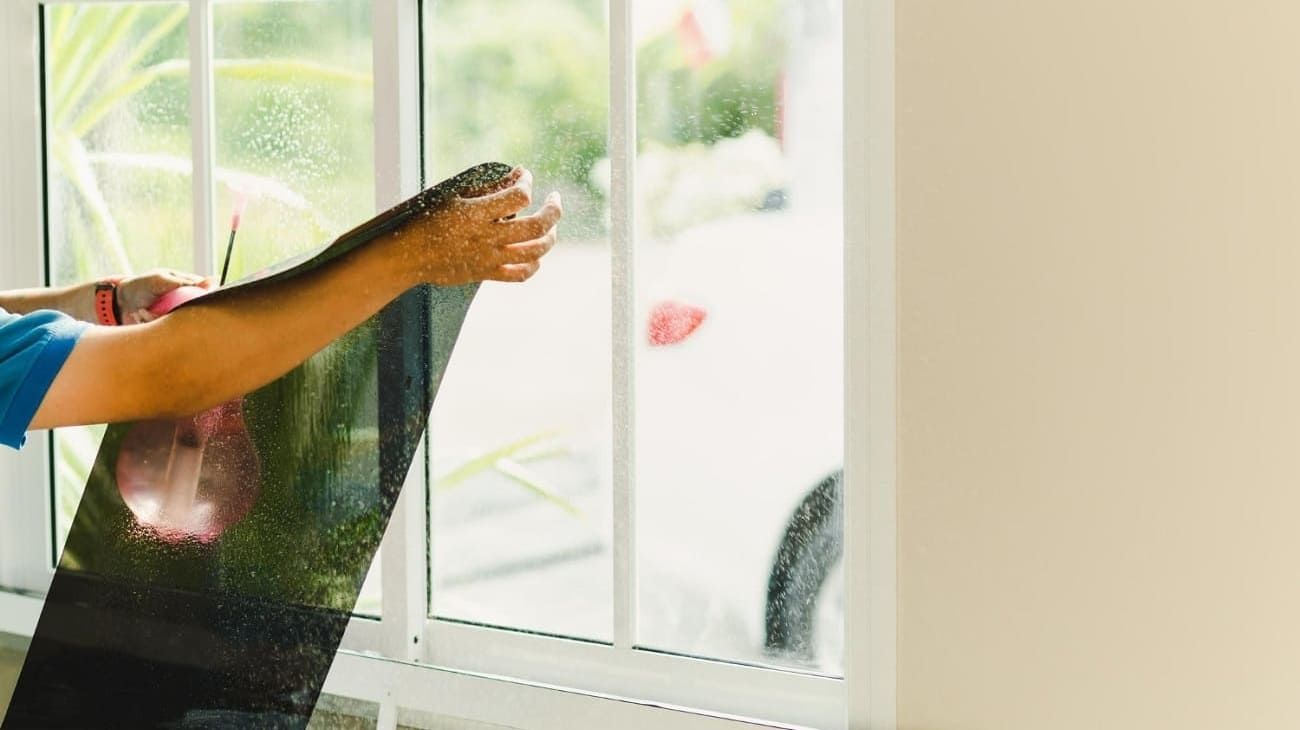
What Residential and Commercial Window Film Solutions Does EcoArc Offer for 2026?
EcoArc Home & Office Window Tinting serves residential and commercial customers across Western North Carolina, East Tennessee, and Upstate South Carolina, including Asheville, Knoxville, Greenville, and Waynesville. As a LLumar SelectPro dealer and an exclusive Vista Film dealer in our area, we work with high‑performance products focused on solar control and heat rejection. Our services include professional consultations, free estimates, on‑site measurements, product recommendations tied to TSER/IR/VLT targets, and trained installation teams to ensure long‑term performance. Our dealer relationships give customers access to LLumar Vista and other LLumar premium lines commonly specified for high TSER and spectrally selective performance.
How Does EcoArc’s LLumar Vista Film Provide Superior Heat Rejection and Energy Savings?
LLumar Vista films are built to boost TSER and reduce IR while keeping VLT at desirable levels — a strong match for southern exposures where daylight and heat control must be balanced. These films typically deliver higher TSER with optimized VLT, which translates to less cooling runtime and fewer interior hot spots. EcoArc’s exclusive Vista access means customers in our service area can be specified products that meet the TSER and IR targets shown earlier, and professional installation helps make sure the system performs as tested. That manufacturer alignment makes it easier for facility managers and homeowners to choose on performance, not just marketing.
What Is the Professional Installation Process for Residential and Commercial Heat-Reducing Films?
Installation starts with a consultation and free estimate to gather window counts, orientations, problem areas, and desired outcomes, followed by on‑site measurements and product selection tied to TSER and VLT goals. Installation includes surface prep, careful film application, trimming, and quality checks; curing and final inspection confirm optical clarity and adhesion. Post‑install QA typically covers warranty registration and performance verification. EcoArc emphasizes professional installation to protect performance and warranty coverage, and our local presence supports consistent follow‑up in the regions we serve.
How Can Homeowners and Business Owners Choose the Right Heat-Reducing Window Film?
Choosing the right film starts with a simple framework: prioritize climate‑specific performance, then weigh budget, aesthetics, and installer credentials. Begin with metric targets (TSER/IR/VLT) to compare manufacturers. For south and west façades, aim for higher TSER and IR rejection; spaces that need daylight should use spectrally selective films with higher VLT. Don’t let upfront cost be the only factor — consider long‑term energy savings and reduced replacement of faded interiors. Finally, pick an installer with manufacturer partnerships and a clear post‑installation process to protect performance and warranty.
When making a selection, follow this checklist to structure decisions:
- Assess Orientation and Pain Points: Identify south/west windows and areas with glare or fading.
- Set Metric Targets: Aim for TSER >50% and IR rejection >60% for heavily sun‑exposed façades.
- Balance Aesthetics vs Performance: Choose spectrally selective or ceramic films to retain daylight.
- Verify Installer Credentials and Warranty: Prefer dealers aligned with premium manufacturers and clear warranty processes.
What Factors Should Be Considered: Climate, Budget, Aesthetics, and Warranty?
Climate drives priorities: hot southern sites emphasize TSER and IR rejection, while mixed climates may prioritize low‑E for winter performance. Budget choices should weigh initial cost against payback from energy savings and reduced replacement of faded finishes; higher‑performing films often pay back faster on larger glazed areas. Aesthetics determine whether a nearly invisible spectrally selective film or a gently tinted ceramic film is acceptable. Warranty and installer certification are essential — choose installers with manufacturer partnerships and documented QA to preserve coverage and long‑term performance.
Where Can You Get a Free Estimate and Expert Advice from EcoArc?
Request a free estimate and expert advice from EcoArc Home & Office Window Tinting by phone for region‑specific scheduling and consultation — Asheville: (828) 545-8750; Knoxville: (865) 214-7646; Greenville: (864) 214-5051. For the estimate, have window counts, orientations, a description of comfort issues, and photos showing glare or fading if possible. We’ll assess performance goals, recommend LLumar Vista or other LLumar premium options aligned with TSER/IR targets, and outline installation timing and warranty terms. Sharing this information up front helps us give an accurate, tailored specification that balances energy performance, daylight, and budget. Our teams handle measurement, product selection, and professional installation to deliver the outcomes described in this guide.
- What to have ready: window count, orientation, pain points, photos.
- What EcoArc provides: free estimate, product recommendation, professional installation.
- Service area reminder: Western North Carolina, East Tennessee, Upstate South Carolina.
This contact pathway gives owners a clear next step to convert the technical guidance in this guide into site‑specific solutions.
- Prioritize performance: Choose films meeting TSER and IR targets for southern exposures.
- Balance daylight: Use spectrally selective or ceramic films where VLT matters.
- Choose certified installers: Ensure professional application and warranty support.
These practical steps close the loop from understanding metrics to procuring and installing films that deliver measurable results tailored to hot southern climates in 2026.
Frequently Asked Questions
What is the lifespan of heat-reducing window films?
Most quality heat‑reducing films last 10–20 years, depending on product grade and installation quality. High‑performance films like the ones we install are made to resist UV exposure and weathering. Proper installation and routine checks extend service life, and timely repairs address any peeling or edge lift before they affect performance.
Can heat-reducing window films be removed and replaced?
Yes. Films can be carefully removed and replaced when needed. Removal is a skilled job best done by professionals to avoid glass damage. Homeowners replace films to upgrade performance, change appearance, or restore clarity — and a professional installer will handle removal, disposal, and reinstallation safely.
Are there any health benefits associated with using window films?
Yes. By blocking up to 99% of harmful UV rays, window films reduce occupants’ skin exposure and slow fabric and finish degradation. Reducing glare also eases eye strain and improves comfort at screens. More consistent indoor temperatures can contribute to overall wellbeing and comfort, especially in hot months.
How do I maintain my heat-reducing window films?
Maintenance is simple: clean with a soft cloth and a mild, non‑abrasive cleaner. Avoid ammonia‑based products and abrasive tools that can harm the film. Inspect periodically for bubbling or edge issues and contact your installer if you see problems — early attention keeps films performing and protects warranty coverage.
What should I consider when choosing a window film installer?
Look for experience, manufacturer certifications, and customer feedback. Certified dealers typically follow manufacturer installation standards and offer clearer warranty support. Ask about warranties, aftercare, and examples of similar projects. A good installer will provide a detailed consultation, recommend films to meet your performance targets, and document post‑install QA.
Can window films help with energy efficiency in commercial buildings?
Absolutely. Window films can reduce solar heat gain and glare, lowering cooling loads and improving occupant comfort — which often boosts productivity. By cutting infrared and UV, films reduce reliance on mechanical cooling and can contribute to green building strategies, including LEED points in some cases.
Conclusion
Right‑sized heat‑reducing window film is a practical, cost‑effective upgrade for homes and businesses in hot southern climates. The right product lowers cooling costs, improves comfort, and protects interiors from UV damage. With an understanding of key metrics and the options available, you can choose a film that fits your goals. Contact EcoArc for a free estimate and local expertise to turn this guidance into a site‑specific plan.
